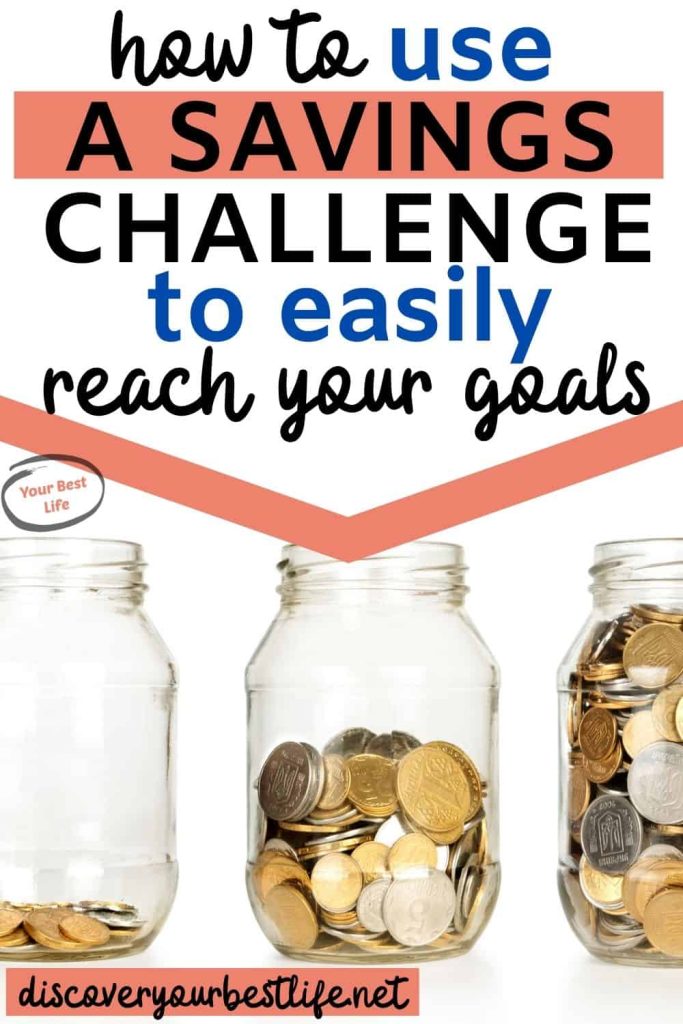Are you always trying to save more — but seem to come up short? If so, then you need to take on a savings challenge to help you reach your goals.
Trust me, if it was easy then we wouldn’t have 40% of Americans unable to cover a $400 emergency. The fact is that while 70% of Americans said they have a savings account, only one in five said they had between $1,000 to $5,000 in it.
Let’s work together to become that one person who can say yes to that question!
Why you need a savings challenge
We’ve all heard the age-old advice to spend less than we earn. But why is it so hard to actually do it? For me, the answer can be simply that it’s boring.
Dave Ramsey is famous for saying that our money problems aren’t a lack of information. There is more information available to us today than ever before in the history of the world. The problem, as Dave puts it, is in the person staring back at us in the mirror.
And that statement is very true for yours truly. I have probably started baby step one in Dave’s famous 7 step system a dozen times. But for some reason, later on down the road, I end up needing to spend that money. And I have to stop whatever step I’m in at that point and go back to step one.
Now, granted that is the point of step one isn’t it? It’s not there to make us feel guilty for using it. It’s there so we CAN use it when we need it.

Over the years, the solution I’ve found to building my savings account is to make it fun. That’s why I am continually looking for fun challenges I can take on that will help me to build back up my savings account.
The envelope savings challenge plan
Continuing with the Dave Ramsey theme is the envelope plan. This is the plan I have had the most success with.
The best part is that it doesn’t have any hard set rules that you must follow. You create your weekly budget and take out the right amount of money each week and put it in your envelopes.
Then what I did, was at the end of the week whatever was in my envelopes went into my savings envelope.
This became the envelope I would take to Costco or on our next beach trip. It always feels so good to pay for things with cash and know that I saved up for this by using coupons, meal planning, and watching my spending.
The problem with this method, even though it is very successful, is that I didn’t like having that much cash somewhere in my purse or home. But I have found this to be the best way to save my money and I think the reason why is precisely the fact that it is in cash.
You can’t spend your cash savings on an impulsive Amazon purchase. And you likely don’t have your cash with you if you see a great sale at Target or Kohls. So I seem to do best with this method for short-term savings goals such as a trip to the beach for a long weekend.
The bi-weekly plan
This yearly savings plan works best if you get paid every other week. I have worked at a hospital since I was 24 and have gotten paid every other Friday for almost twenty years. So this method works great for me. And if you’re also getting paid every other week then this is the plan for you.
If you get paid every other week then you will get 26 paydays over the course of a year. This works out to just under $40 each paycheck. My pro tip for this is to set up a savings account at a bank that isn’t where your family checking account is. When I do this it helps protect me from myself and impulse purchases.
If you get paid weekly, you can divide 1,000 by 52 (roughly $20) or if you get paid monthly you will change it to $83 dollars each payday. Set up an automatic deposit from each paycheck for this amount to go to your savings account. The key is to take yourself out of the equation and make it automatic. Without that you’ll never follow through for all 26 paychecks – ask me how I know!
This method moves small incremental amounts over into savings and builds up over time. Basically, at the end of a year, you will have the 1,000 in savings that Dave Ramsey suggests.

Remember, you aren’t going to run out and finish a marathon overnight. So don’t try to start saving hundreds of dollars every month right away. Start small and work your way up.
The 90-day plan
This plan is by far the hardest to accomplish. But sometimes, when you’re ready to make a big change you have to just dive in. And just as with any new change, getting started is the hardest part.
My suggestion is to set up a savings account at a separate bank from your family checking account and deposit $100 into it right away. This will be the hardest part of this particular challenge so don’t worry if it takes you a while to make this first step.
Now that you have $100 in your new savings account, to get to $1,000 in the next 12 weeks you need to deposit $75 each week. This will be daunting, so have a plan in place for where you will get that $75. Remember, if it was as easy as “spend less” then you would’ve done it already.
Instead, look into ways that you can earn an extra $75 each week. The gig economy is thriving right now. And I’ve been saying for years that sometimes it is easier to make more than to spend less.
For me, one of the best ways I found to do this was to do online transcription for Rev. They pay weekly and so I set up my account to deposit into the savings account rather than our family checking account. For me, the biggest thing to remember here is that you’re not going to get rich doing something like transcription. Rev pays a whopping 0.30 cents per audio minute, so this is a side gig. However, if you’re a stay-at-home mom, or student, or early retiree this can be a phenomenal way to add some money to your budget each month.
They pay weekly via PayPal and were never late for me when I worked with them. Plus, the best part is that there isn’t much of an application process. You do have to take a speed test and a short grammar test after you fill out your profile. But if you type decently fast and have at least a high school education you should be fine. You don’t have to talk to anyone or explain why you’re returning to work after an extended absence which was the clincher for me when looking for a way to add some money to our savings.
Regardless of if you choose to work online, deliver pizza or groceries, or if you get a second job – figure out how much you need to work each week to earn an extra $75 each week and then get to it.
And, of course, have it automatically deposited to your separate savings account! This is key to whatever challenge you choose.
Pick a challenge and get started today
There you have it. Three great options to help you save money, even if you don’t feel like you have any. Choose which money-saving challenge is right for you and your family and you will see success slowly over time. Trust me, I know that “slowly over time” isn’t sexy, but seriously, it works.
I am done with trying to skip my fancy coffees or eat out of the pantry for a week. For me, I would rather skip cable and add an extra income stream in order to reach my savings goals. Which challenge will you choose?





